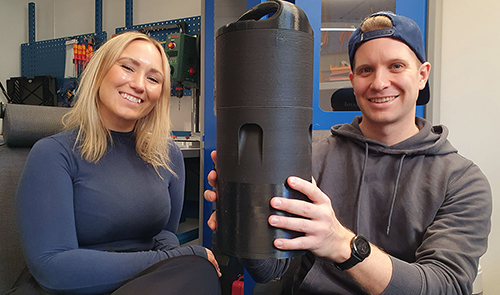The library is testing an innovative method to detect and combat bed bugs
A machine developed by KTH students Maja Åstrand and Simon Lilja is now in use in the library. With support from KTH Innovation, they have developed the technology and founded the company Simulair.

How it works
At first glance, the machine looks like a large air purifier, but it is in fact a smart trap. It releases heat and carbon dioxide to simulate a sleeping human. Bed bugs are attracted, crawl inside, and get trapped. The results can be monitored in real time through an app.
Currently, the machine operates at night only, to avoid disturbing visitors with sound. The machine will also be moved to different spots in the gallery for optimal coverage, and the library is using diatomaceous earth along the baseboards – a harmless powder that bed bugs cannot survive.
Putting KTH innovations into practice
The goal is both to detect whether any bed bugs remain and to create a sense of security for visitors and staff.
We are also pleased to be able to use KTH research in a very practical and problem-solving way.
Minimal risk of spreading
A common concern is that bed bugs could spread or be carried home. But according to Simulair, the risk is minimal – bed bugs usually stay where they have already found a “food source” and rarely travel far. The machine’s emissions are completely safe for humans but make bed bugs more active, which increases the chance of detecting them.
As an added bonus, the machine also seems to attract other small insects such as silverfish, which get stuck in the trap as well.

